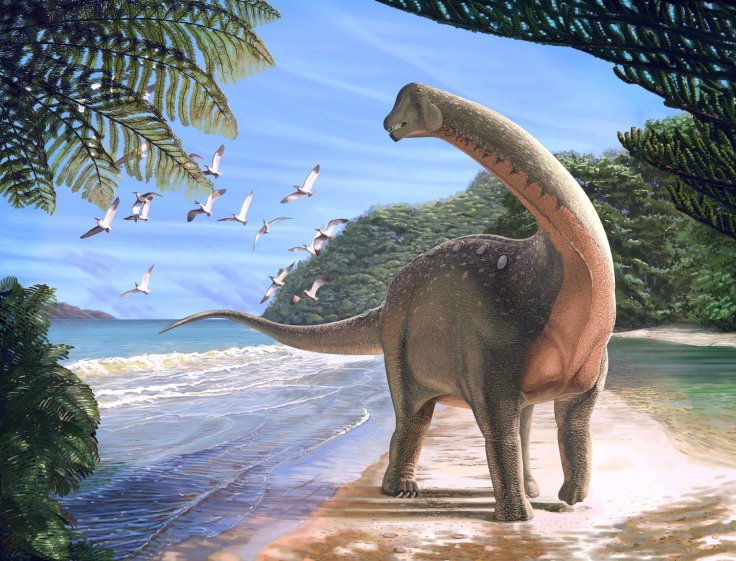
Researchers have identified a new species of dinosaur from the Sahara Desert of Egypt which belongs to the late Cretaceous period, from the time prior to 100 to 66 million years ago.
The new species have been named Mansourasaurus shahinae after the Mansoura University which led the excavation.
Mansourasaurus belongs to the Tetanosauria group of sauropods, the long-necked plant-eating dinosaurs that have bony plates embedded in its skin. They were common throughout the world during the Cretaceous age. The group involved largest land animals including Argentinosaurus, Dreadnoughtus, and Patagotitan. The moderately sized Manosourasaurus weighed as much as an African bull elephant.
Researchers from the Mansoura University Vertebrate Paleontology (MUVP) have unearthed the species under the leadership of Dr. Hesham Sallam of Department of Geology at Mansoura University in Egypt.
Dr. Eric Gorscak, a postdoctoral research scientist at the Field Museum who has worked in the mission said, "Mansourasaurus shahinae is a key new dinosaur species, and a critical discovery for Egyptian and African paleontology."
The life of land-dwelling animals in Africa during the end of the age of dinosaurs remained doubtful throughout. Fossils of the late cretaceous dinosaurs are difficult to find as most of the fossil prone regions are covered in lush vegetation. Africa lacks visible fossil records from the Cretaceous era as seen in places like Rocky Mountain region, the Gobi Desert, or Patagonia. Therefore, the dinosaur life in the African mainland during the massive geological and geographic changes remained clueless.
Earth was composed of a single supercontinent Pangaea during the earlier phase of the Jurassic period and the Triassic period.The continents, however, started to split during the Cretaceous period. The connection of Africa to other Southern Hemisphere landmasses and Europe also remained unclear and this led to doubts regarding the process of evolution due to geographical separation.
However, the recently discovered Mansourasaurus show more closeness to dinosaurs from Europe and Asia than those from Southern Africa and South America. The closeness of bone features has given clues that Africa's last dinosaur species were not completely separated from Europe.
The recently found dinosaur skeleton is an almost complete specimen with preserved parts including the skull, the lower jaw, neck and back vertebrae ribs, most of the shoulder and forelimb, part of the hindfoot and pieces of dermal plates.
Dena Smith, a program director in NSF's Division of Earth Sciences said, "The discovery of rare fossils like this sauropod dinosaur helps us understand how creatures moved across continents and give us a greater understanding of the evolutionary history of organisms in the region."
Researchers from other institutes in Egypt and the US had worked along with the African paleontology experts during the expedition and for further analysis.









